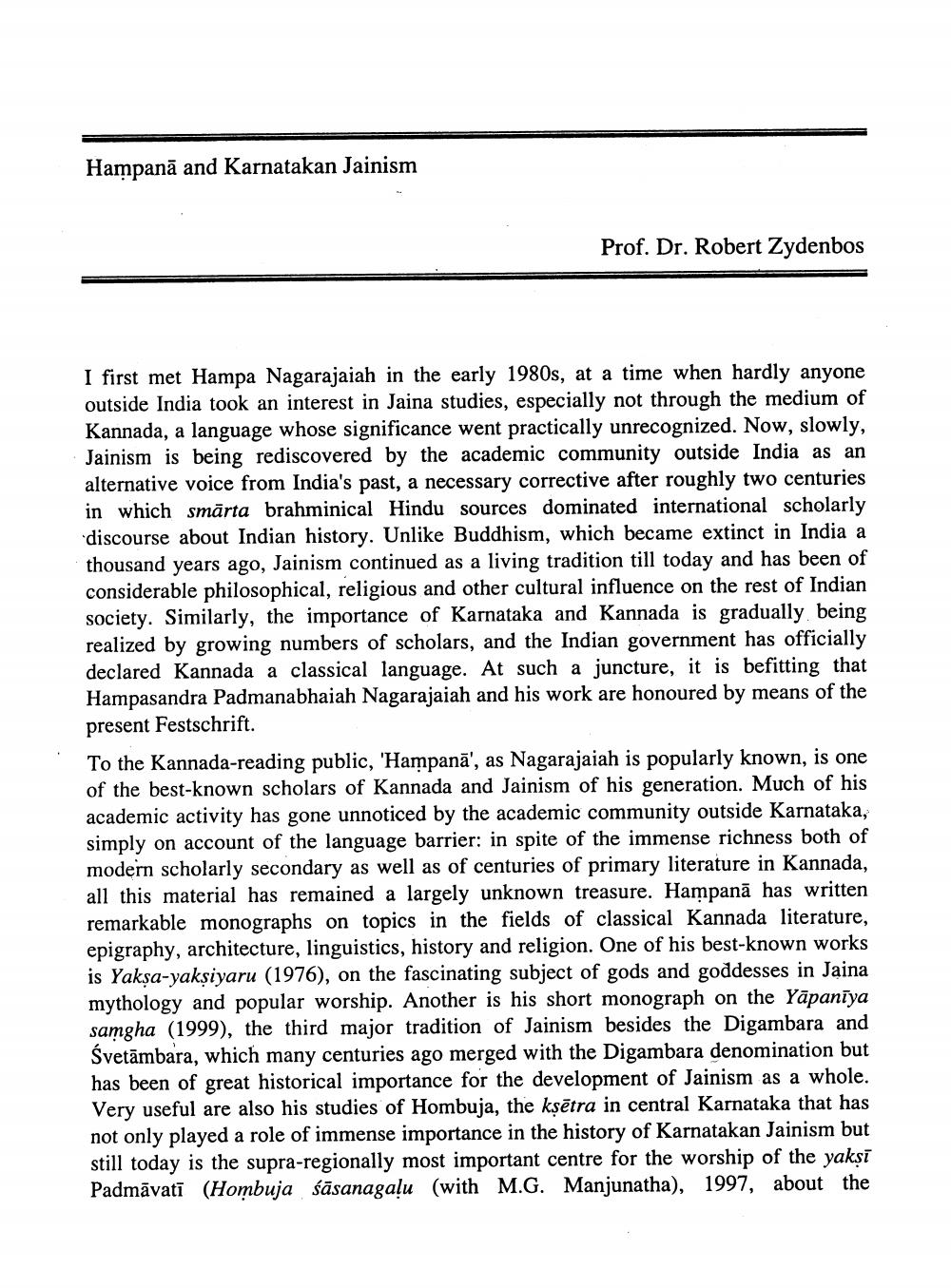________________
Hampanā and Karnatakan Jainism
Prof. Dr. Robert Zydenbos
I first met Hampa Nagarajaiah in the early 1980s, at a time when hardly anyone outside India took an interest in Jaina studies, especially not through the medium of Kannada, a language whose significance went practically unrecognized. Now, slowly, Jainism is being rediscovered by the academic community outside India as an alternative voice from India's past, a necessary corrective after roughly two centuries in which smārta brahminical Hindu sources dominated international scholarly discourse about Indian history. Unlike Buddhism, which became extinct in India a thousand years ago, Jainism continued as a living tradition till today and has been of considerable philosophical, religious and other cultural influence on the rest of Indian society. Similarly, the importance of Karnataka and Kannada is gradually being realized by growing numbers of scholars, and the Indian government has officially declared Kannada a classical language. At such a juncture, it is befitting that Hampasandra Padmanabhaiah Nagarajaiah and his work are honoured by means of the present Festschrift. To the Kannada-reading public, 'Hampanā', as Nagarajaiah is popularly known, is one of the best-known scholars of Kannada and Jainism of his generation. Much of his academic activity has gone unnoticed by the academic community outside Karnataka, simply on account of the language barrier: in spite of the immense richness both of modern scholarly secondary as well as of centuries of primary literature in Kannada, all this material has remained a largely unknown treasure. Hampanā has written remarkable monographs on topics in the fields of classical Kannada literature, epigraphy, architecture, linguistics, history and religion. One of his best-known works is Yakşa-yaksiyaru (1976), on the fascinating subject of gods and goddesses in Jaina mythology and popular worship. Another is his short monograph on the Yāpanīya samgha (1999), the third major tradition of Jainism besides the Digambara and Svetāmbara, which many centuries ago merged with the Digambara denomination but has been of great historical importance for the development of Jainism as a whole. Very useful are also his studies of Hombuja, the ksētra in central Karnataka that has not only played a role of immense importance in the history of Karnatakan Jainism but still today is the supra-regionally most important centre for the worship of the yakși Padmāvatī (Hombuja sāsanagalu (with M.G. Manjunatha), 1997, about the




